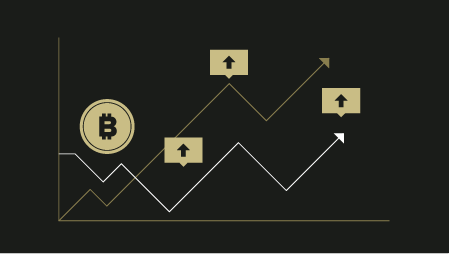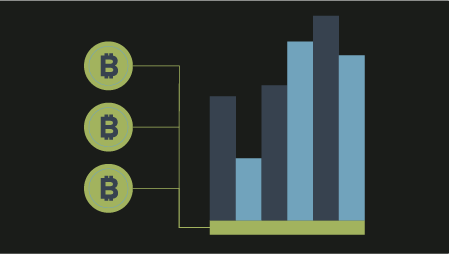The blockchain-enabled data integrity facilitates new forms of inter-organizational and inter-industry collaboration, serving as a backbone for applications in areas such as Industry 4.0, Mobility and Energy whilst being settled with a pay-per-use scheme. Previously, costly and incompatible intermediate stages of the business process, caused by incompatible ERP systems, data silos, different company policies, and a lack of trust, are thus merged and harmonized over the entire business process lifecycle and are monitored by the conditions of a smart contract. Hence, the blockchain’s characteristics of transparency, immutability, and cryptography are the cornerstones for the emergence of inter-company and inter-industry collaboration. This creates a high level of trust among participants of integrated ecosystems, permitting a high degree of automation with auditable parameters and simultaneously reducing the need for human intervention to a minimum. — Authors: Philipp Schulden, Thomas Faber, Philipp Sandner
Blockchain-enabled integrated business ecosystems prospectively lead to a new level of cross-industry and cross-sectoral collaboration between firms. The resulting interoperability results in an outward reorientation of the participating organizations, enabling individual entities to be part of a globally networked economy. The outward-looking re-orientation of the companies allows for a reciprocal exchange of data, which will result in a highly collaborative and diverse ecosystem. Yet, in such ecosystems, the blockchain can only develop its potential and create added value in convergence with other emerging technologies. Such ecosystems receive data recorded by Internet of Things (IoT) devices, which is then administered and verified by the blockchain to consequently being automated by artificial intelligence. Therefore, within the following description of blockchain-enabled ecosystems, blockchain primarily acts as the basis-layer for the encrypted and transparent transferral of data and as a means to automate, structure, and orchestrate the data flow between the associated parties.
Applicability of blockchain-based integrated Business Ecosystems
In particular, the potential of integrated ecosystems becomes apparent for companies with a large machine base permitting connectivity to the internet, for businesses with high-volume and industry-relevant data production, and for corporations maintaining recurring and intensive supply relationships amongst each other. In the first case, using such a blockchain-based integrated ecosystem, companies can integrate their machines into a payment network, achieve a high degree of automation and at the same time make the machines accessible to the external market, for instance, to increase the machine utilization and to consequently reduce idle times. Additionally, finance departments and risk management can leverage the blockchain and emerging ecosystems to exchange valuable and industry-relevant data with other ecosystem participants and at the same time being able to monetize collected data. For example, vehicle data on the blockchain is already being exchanged between several car manufacturers in an ecosystem with the aim of improving the performance of vehicles. Moreover, applying blockchain technology eliminates barriers that previously hindered the secure and transparent exchange of this data. All participants, including the drivers, retain full control over their data and can decide which data they want to pass on and which not. Additionally, companies with large and multi-dimensional supply relationships can use such ecosystems to automate and streamline the entire order lifecycle. Thus, participating in an integrated ecosystem potentially results in cost reductions with regard to cost-efficiencies through the automation of business processes, a decrease in administrative expenditures, as well as a reduction in labor costs. In addition, integrated business ecosystems provide an opportunity for new business models and therefore new profit pools for participating organizations.
Blockchain-based pay-per-use as a facilitator for inter-company and cross-industry collaboration
The blockchain-technology will serve as a key technology to facilitate the complete integration of data flow of all functions involved in the economic process of the Industry 4.0. Underlying smart contracts thus enable machines to autonomously conduct payment transactions (M2M payments) as well as to autonomously control the transaction-related business process lifecycle without the need for interventions of human-operated accounting departments. The blockchain facilitates full transparency and integrity of sensors’ telemetry data, e.g. measuring the utilization rate of a molding machine. This data can then be used to enable new billing methods, such as pay-per-use. Resulting in the high degree of transparency and trust among the operator and customer, machinery can be embedded into the payment transaction processing by additionally using the blockchain as a payment layer. The resulting business logics are however more than bilaterally applicable. Rather, these ecosystems unfold their full potential when they are multilateral, i.e. when several entities leverage the extracted telemetry data, which is then verified by the blockchain to establish and maintain business relationships within a multi-party ecosystem. This way, different stakeholders along a value chain find a joint operational structure to offer — or even expand — their services in a fully automated and digital setting.
Roles of the ecosystem participants
An exemplary ecosystem can be formed by a machine manufacturer, a machine user, a bank, and an insurance company. The roles are as follows:
- The machine manufacturer produces the machine and delivers it to the production site of the machine user. The machine is equipped with multiple sensors to measure the machine’s utilization. This data is then used to provide the machine user with a usage-based invoice (pay-per-use). The usage data generated is also transferred to a bank in the same ecosystem in order to enable the machine manufacturer to obtain usage-based loan-repayments in order to bridge the production costs.
- The machine user orders the machine from the machine manufacturer. It is not purchased or leased at predetermined rates as in conventional models but is instead billed according to actual machine utilization. The generated sensor data is also transmitted to an insurance company within the same ecosystem, allowing the machine user to be offered a usage-based insurance premium.
- The bank receives the usage data of the machine’s sensors and thus can offer usage-based loan repayments to the machine manufacturer.
- The insurance company receives the usage data of the machine’s sensors and thus can offer a usage-based insurance premium to the machine user.
Role-specific benefits of using an integrated and cross-sectoral blockchain-based ecosystem
Many of the advantages related to a pay-per-use payment scheme require a closely interlinked ecosystem to unfold their maximum potential. This is enabled by blockchain technology which creates the foundation of a secure and trusted information exchange between machine manufacturer, machine user, bank, and insurance. An expert to be named in this context is the German company PayPerChain.
Machine manufacturer
Machine manufacturers are highly dependent on economic cycles, as machines are only demanded if the general order situation of e.g. OEMs is favorable. The often considerable investment requirements of machine users make it difficult for machine manufacturers in economic downturns to ensure a sufficient turnover. Also, machine manufacturers are increasingly under pressure as machine users demand new financing methods. With a blockchain-based pay-per-use model, data can now be transferred in a verified, encrypted, and transparent manner to make such new payment schemes viable. This provides the machine manufacturer with the basis for cost-covering machine turnover even in economically difficult times, as the acquisition and lending risk of the machine users is considerably diminished.
Machine user
While in the traditional world the acquisition of new equipment requires high upfront capital expenditures, the pay-per-use payment model links costs to the actual use of the machine. This provides machine users with a new opportunity to improve their cash flow and financial flexibility. Since the machine user no longer has to deal with the linear depreciation of the equipment, the associated operational risks (e.g. underutilization due to empty order books) are transferred to the equipment manufacturer and the bank respectively. This makes machine users more resilient to economic downturns or seasonal cycles. The machine user also benefits from tailor-made, usage-dependent insurance premiums that are calculated based on e.g. machine utilization (higher machine utilization leads to higher default risk and vice versa).
Bank
Even in weak economic periods, the pay-per-use payment structure enables machine users to invest strategically as they have greater financial leeway. As a consequence, the demand for investment loans increases for banks, enabling them to sell their products in times when they would otherwise not have been sold. Additionally, banks can expand their offering to new foreign markets as blockchain technology guarantees data streams that cannot be tampered with. In the event of the machine user not paying for the use of the machine, the machine can be shut down remotely. Thinking ahead, all machines in the ecosystem could be tokenized and traded in the form of entirely new financial products on blockchain-based capital markets.
Insurer
Insurers have been dealing with intense competition and rapid digitization of the sector. To keep up with innovative new fintech players, established insurance companies have to transform their product strategy, company culture, and IT infrastructure. Although the pay-per-use ecosystem is no allrounder to counter these challenges, it has the potential to create a competitive advantage through the aforementioned usage-based insurance premiums for machine users. Insurers can use it to tailor their products to the machine user in an unprecedented individuality. Being a pioneer in usage-based premium offerings may, therefore, opening up completely new markets and customer groups for insurers.
Conclusion
Blockchain technology, through its inherent characteristic of data integrity and transparency, will facilitate integrated business ecosystems, serving as a backbone for applications and business models in the fields of e.g. Industry 4.0, Mobility and Energy. The emerging networked economy facilitates new forms of inter-organizational and inter-industry collaboration which are researched in the iBlockchain project. This opens up numerous advantages for all participating parties, such as new financing opportunities, reduction of business and industry risk, new business models, and the development of new markets. Particularly in convergence with other emerging technologies such as IoT and AI, a high degree of automation and business process optimization is achieved. However, the necessary preconditions for integrated ecosystems include standardization of blockchain protocols, a change of mindset in the top management of companies as well as neutral platform governance.
Remarks
This research and development project was partially funded by the German Federal Ministry of Education and Research (BMBF) within the funding number 16KIS0906 and implemented by the VDI/VDE Innovation + Technik GmbH. The authors are responsible for the content of this publication.
Co-Authors
Philipp Schulden is the chief operations officer of the Frankfurt School Blockchain Center at the Frankfurt School of Finance & Management.
Thomas Faber is a research fellow at the Frankfurt School Blockchain Center and a project manager at the International Token Standardization Association (ITSA).




